The town of Banska Stiavnica, Slovakia, is a jewel in the Carpathian Mountains of central Slovakia (often called the Carpathian Crescent). This small town is off the main tourist path, but is an amazing specimen of medieval life in the greater Hungarian Empire. These days, the town offers a slower pace of life that is downright serene. However, just beneath the surface, you see how this town changed the world.
- UNESCO World Heritage Site of Banksa Stiavnica
- Things to do in Banska Stiavnica
- The Mining and Forestry Academy and the Botanical Garden
- The Old Castle (Starý Zámok)
- The Holy Trinity Square
- New Castle (Nový Zámok)
- Slovak Open-Air Mining Museum
- ERB Brewery
- Visit a Thermal Spa
- Day Trips
- The Seven Wonders
- Where We Stayed
- Where We Ate
UNESCO World Heritage Site of Banksa Stiavnica
Today, Banská Štiavnica and the Pohronie Region (the Hron River Region) area are visited primarily by Slovaks for weekend getaways, but the town has a more notable history. It is the oldest mining town in Slovakia and sits atop The Theresa Vein – one of the richest deposits of silver during the Middle Ages. The medieval mining town has played a transformative role in history of the world.
No other town in the world has contributed more to development of the mining industry. Compared to other towns in Slovakia, Banska Stiavnica was a very wealthy town and received the nickname of Silver Town.
Check the current prices on lodging here
The mountains surrounding Banska Stiavnica and the Pohronie Region were at the eastern edge of the Celtic empire over 2,000 years ago. In the 14th century, this area was the largest purveyor of precious metals in Europe.
By 1627, mining was a deeply entrenched industry in the mountains around the town. In that year, gunpowder and explosives were used in mining for the first time. This revolution and the many subsequent inventions put the region in the history books. The community is recognized as the Banska Stiavnica UNESCO World Heritage Site, not just for the charming village, but also for the contributions to the mining industry.
Things to do in Banska Stiavnica
Our guide, Magdalena Valkovicova, took us on a walking tour of the town. We wanted to get a sense of the place and to understand what makes it so special:
The Mining and Forestry Academy and the Botanical Garden
Situated on the hill immediately above our hotel on Akademicka road, we learned about the school founded by Maria Theresa in 1762, which still exists today and focuses on using the Slovakia natural resources in a responsible manner. But, for centuries, this school focused on the important work of transforming and modernizing the mining and forestry industries that took place throughout the region.
Just behind the Academy, the lush Botanical Garden occupies a small plateau and the surrounding hillside. Most impressive for us, they have a giant sequoia – the first time we have ever seen the tree outside of California.
The Old Castle (Starý Zámok)
Located just over the hill from the Academy, the Old Castle (In Slovak: “Starý Zámok”) stands guard at the top of the town. Originally a church, it was built into a fortification in 1564 to protect from the Ottoman Turkish invasions. Today, the Old Castle houses a number of exhibits, including a medieval jail.
The Holy Trinity Square
Below the Old Castle is the heart of the town – the Holy Trinity Square. The tourist information office is located here on the ground floor of the Berggericht – a building with a large mineralogical exhibition. But the highlight of the square is the massive red stone baroque sculpture to the victims of the plague. Even in completely overcast conditions, the Holy Trinity statue seemed to shine.
New Castle (Nový Zámok)
At the opposite end of the town, the Banska Stiavnica New Castle (in Slovak: “Nový Zámok”) fortification kept watch for invading Turkish forces. The castle has a commanding view of the town as well as the entire valley.
Slovak Open-Air Mining Museum
We then drove about a mile out of town to the Slovak Open-Air Mining Museum, where we learned about the technical aspects of mining in the region and how this changed the region. It was also a chance to dress up in bright yellow hardhats and descend deep into the earth to see how the silver was extracted.
ERB Brewery
We jumped at the chance to have lunch at ERB Brewery. This town had a long history of brewing beer, but today there is only ERB Brewery. A modern upstart (founded in 2010), ERB (which actually stands for Eduard Rada Breweries) brews some of Slovakia’s best beers. Compared to massively hoppy brews in other parts of the world, ERB Brewery focuses on classing lagers and darks in the original European tradition.
There’s nothing like enjoying frothy brew while sitting next to the mash tun. For lunch, we enjoyed their creative take on Slovakian cuisine with a duo of pork and beef.
Visit a Thermal Spa
One of the benefits of the Pohronie Region is the number of world class spas in the vicinity. We went to a neighboring town about 20 minutes away to soak in the hot waters at the Kupele Sklene Teplice spa – this communist era spa traces its roots back to the mid-1800s. It also has a hot springs within a cave (called the Parenica) which is unique in Europe.
Day Trips
The town of Banska Stiavnica makes a great base to explore some of the other UNESCO World Heritage Sites in Slovakia. We used the town to explore the mountainside village of Vlkolinec, Slovakia and also the Wooden Churches of the Carpathian Mountains.
Finally, as we visited a number of churches before we left town, we had a curious observation. This was a town of extreme wealth due to its role in silver mining. But that wealth dried up long ago. Until it was discovered by tourists, the town was preserved through poverty and didn’t modernize. The result is arguably one of the most beautiful towns in Slovakia for us to visit.
And that may be the magic of this town. The town seems to be from an earlier age. There are over 360 preserved buildings and historical sites in the town. The pace of life seems to creep along. We wandered the historical sites while stopping into quiet cafes for a drink. The town just feels like it is plucked from the past.
The Seven Wonders
The town has something they call the Seven Wonders. These “wonders” highlight both unique aspects to the town as well as quirky plays-on-words. As we discovered, Slovaks love these play-on-words and we encountered it throughout our time in the country.
Being completely honest, we didn’t totally understand some of their Seven Wonders. However, locals are incredibly proud of their “seven wonders” so we share them here:
The snow falls every year on St. Peter and Paul. This is a play on words. In Slovakia (like in other Catholic countries) people celebrate Name Days – a day of the year associated with one the various Catholic saints. The name days for Peter and Paul are at the beginning of summer. So, it is obviously not snowing. This wonder refers to the statues in front of the Church of the Assumption of the Virgin Mary and it snows on the statues at least once a year. This seems to mean something more to the residents than it does to visitors.
The Hands of the Town Hall Clock. This wonder doesn’t need much translating. Anyone can look at the town hall clock can see something unusual – the big hand marks the hours and the small hand marks the minutes. There are a number of interesting legends as to why this is the case, but we’re thankful someone explained it to us.
The Ground Floor is the Top Floor. The town is built into some very steep valleys on the sides of the volcano caldera. Because of this and the layout of the roads, many of the homes have their entrances on the very top floor and the rest of the house is built below.
Goats are Tied to the Chimney. This wonder also relates to the hilly geography. Evidently, locals are accustomed to tying up their livestock (primarily goats) to the chimneys of their homes.
Water Crosses the Bridge. This is sometimes phrased no water under the bridge. This wonder refers to the construction of aqueducts to carry water for the purposes of mining, usually from the artificial reservoirs (called “tajchy” in Slovak).
There is a Bull in the Chimney. This wonder relates to a story where a bull was grazing in a field and fell down into a mine shaft. The bull survived, but it took residents a day to wench the bull up and out of the mine shaft.
The Human Clock. During the middle ages, a guard in the New Castle tower kept watch for approaching Ottoman invaders. The guard tooted his horn every 15 minutes to let people know that he was on watch and there was no threat. In this instance, silence meant invasion. Today, the horn is still blown every 15 minutes.
These seven wonders are a bit unusual and some of them seem to be inside jokes, but the residents enjoy talking about their “wonders.”
Where We Stayed
When it comes to Banska Stiavnica hotels, there aren’t a lot of options. However, when it comes to luxury accommodations in the heart of town, the Penzion Cosmopolitan II is the preferred address for visiting royalty who come to the region. No, really. This inn has hosted kings and queens…and us.
Perched on the corner just below the Mining Academy on the main street, the inn has one of the best locations in town. When we rolled into town, we were looking to be treated like visiting royalty. And, like the other royal family, we also stayed in the grand Royal Suite – a massive three room suite that occupies the entire second floor of the hotel. And like that other royal couple, we drank delicious Slovakian wine while we relaxed in our room. This is the kind of life we could get used to.
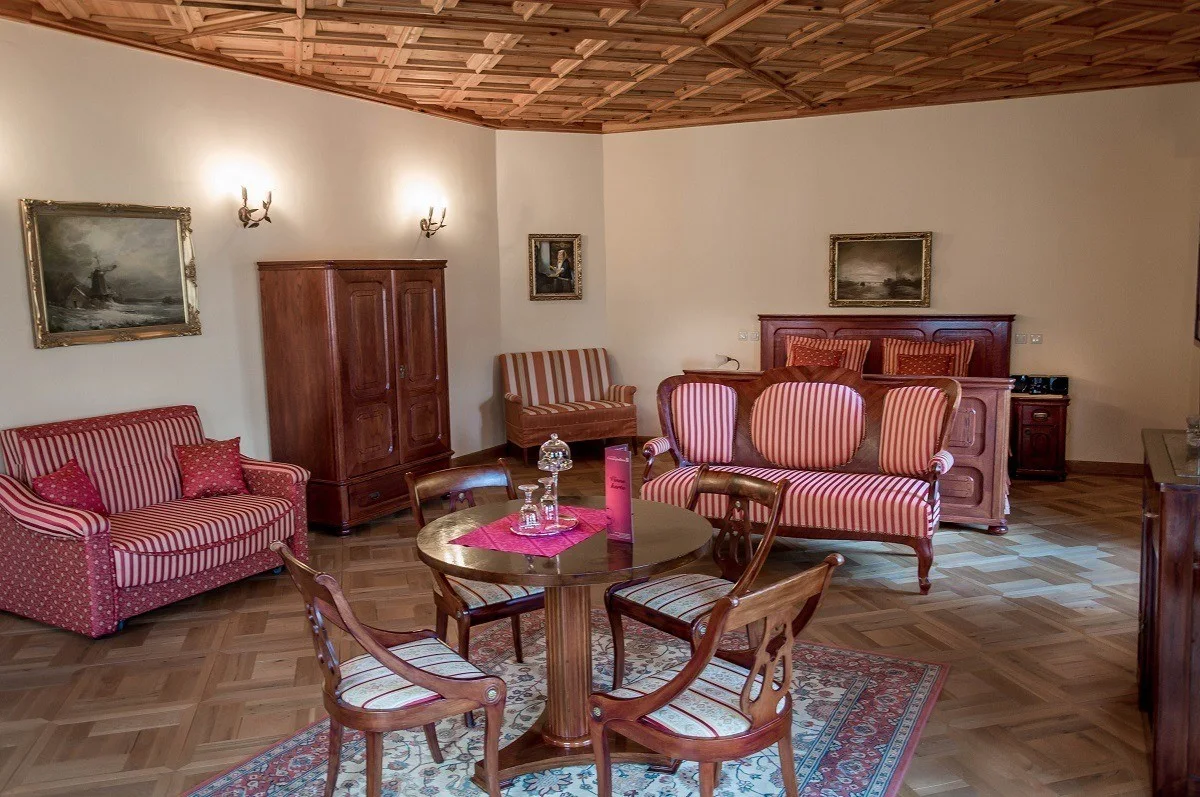
Perhaps the most unique aspect of the Penzion Cosmopolitan II is the mine. All of the hills around the town are riddled with mines. Access to the mines was through horizontal tunnels that connect to the vertical shafts. These access tunnels were essentially built into the basements of buildings, including our hotel.
Just behind the reception desk, the hotel has created a wine vault in what was once one of the mine access tunnels. Continuing through the wine vault, visitors can enter a small section of the actual mine tunnel, which has been turned into an art gallery. This is probably one of the world’s most unique art galleries anywhere. The Penzion Cosmopolitan II makes the perfect base to explore the Pohronie Region!
Check current prices at the Penzion Cosmopolitan II here.
Where We Ate
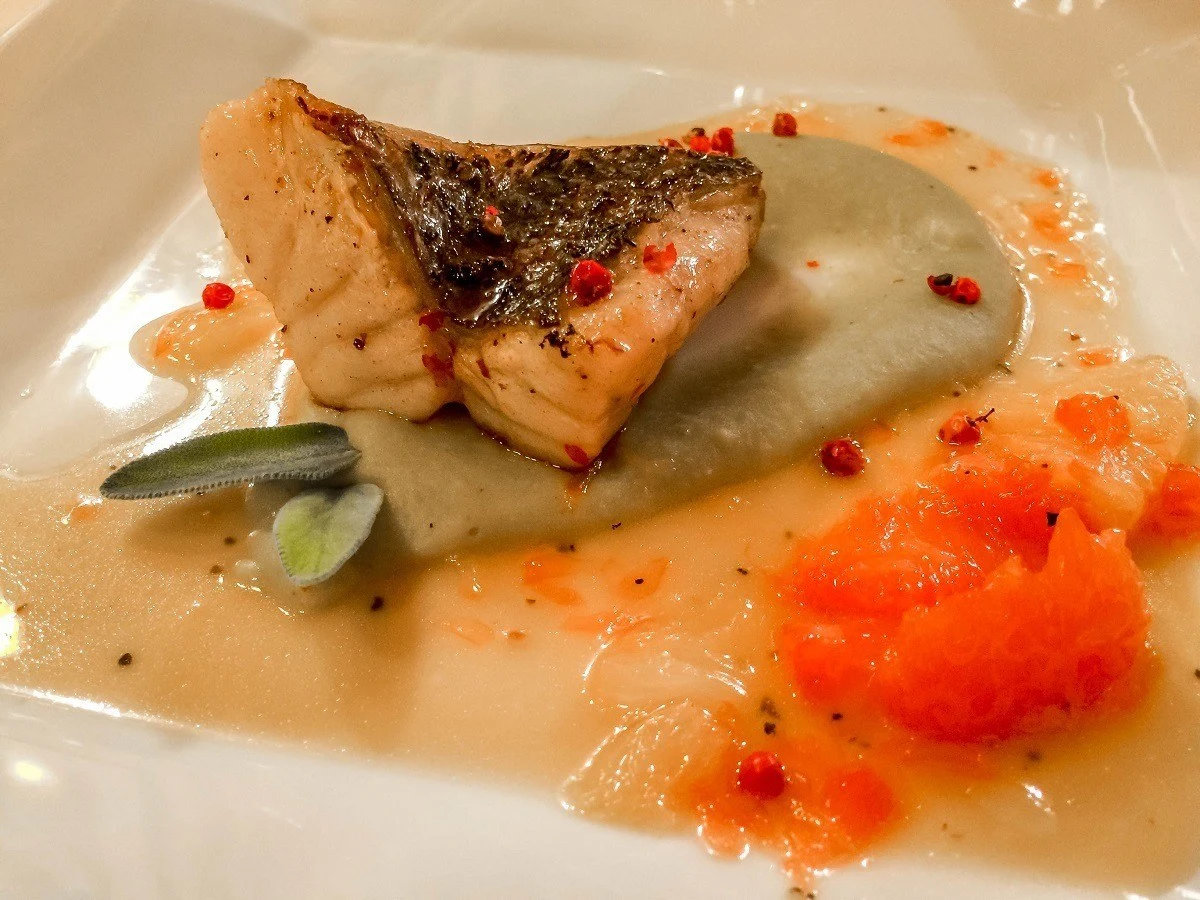
There are number of small restaurants in town as well as several cafes and bars. On our first night, we walked down the hill to the Penzion Cosmopolitan I for dinner in their restaurant. The Cosmopolitan actually has three distinct inns in town.
We were expecting to dine on traditional Slovak cuisine. We were completely unprepared for an explosive six-course tasting menu of dishes rooted in Slovak heritage, but leaping into world cuisine. At times, the chef was playful in the use of the ingredients. We started with a “steak” of veal tartar that had a light citrus flavor before enjoying roasted plums with bacon and brandy (a duo of the sweet and the savory).
Since we were in season, the soup was frothy pumpkin cream with “croutons” of seared tuna. The fish course was a Barramundi with sage, fava beans and grapefruit sauce, followed by a meat course of veal and venison in a tarragon butter sauce with traditional Slovak potatoes. A dark chocolate tart with strawberry mousse completed the evening. The meal was deliciously decadent and everything a visiting royal could want. After dinner, we thought about making use of the bowling alley downstairs, but were too tired. Yes, the Cosmopolitan I has a bowling alley in it!
We were the grateful guests of the Slovak Tourist Board. We would also like to extend special thanks to our guide and translator, Magdalena Valkovicova. As always, all opinions and photography are our own.
Lance Longwell is a travel writer and photographer who has published Travel Addicts since 2008, making it one of the oldest travel blogs. He is a life-long traveler, having visited all 50 of the United States by the time he graduated high school. Lance has continued his adventures by visiting 70 countries on 5 continents – all in search of the world’s perfect sausage. He’s a passionate foodie and enjoys hot springs and cultural oddities. When he’s not traveling (or writing about travel), you’ll find him photographing his hometown of Philadelphia.


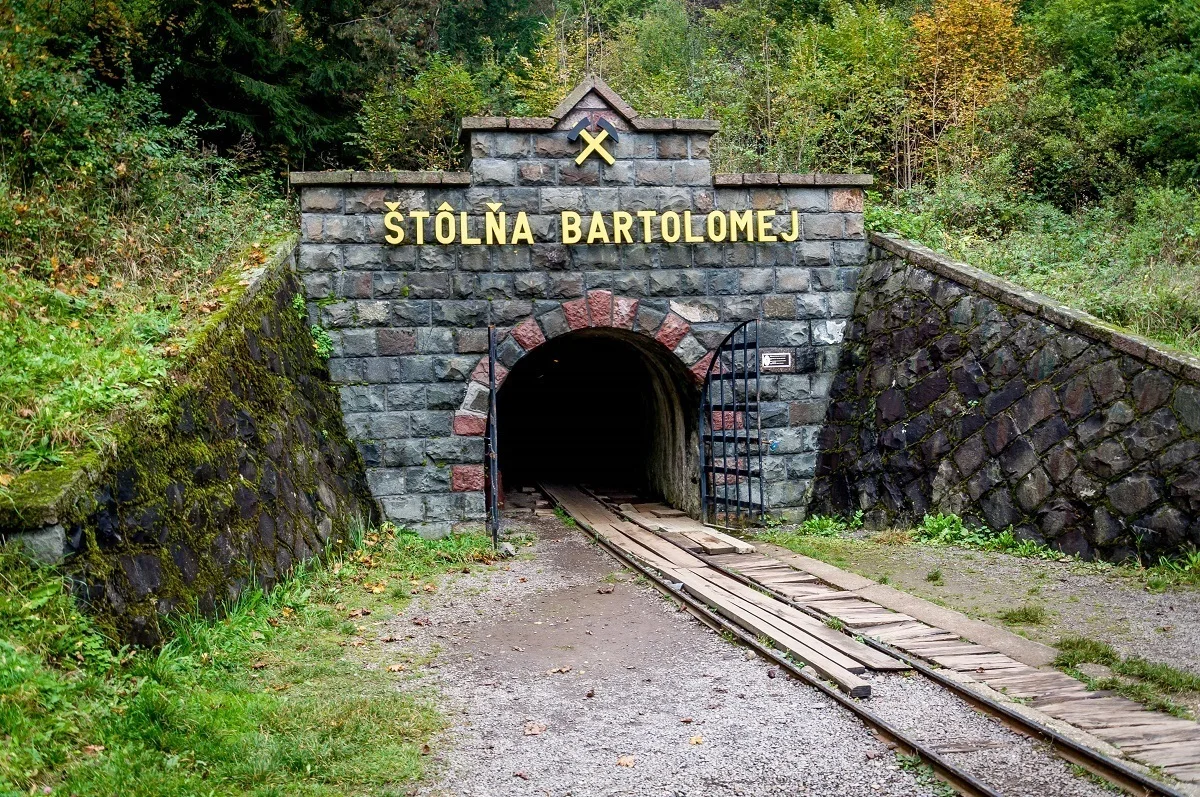
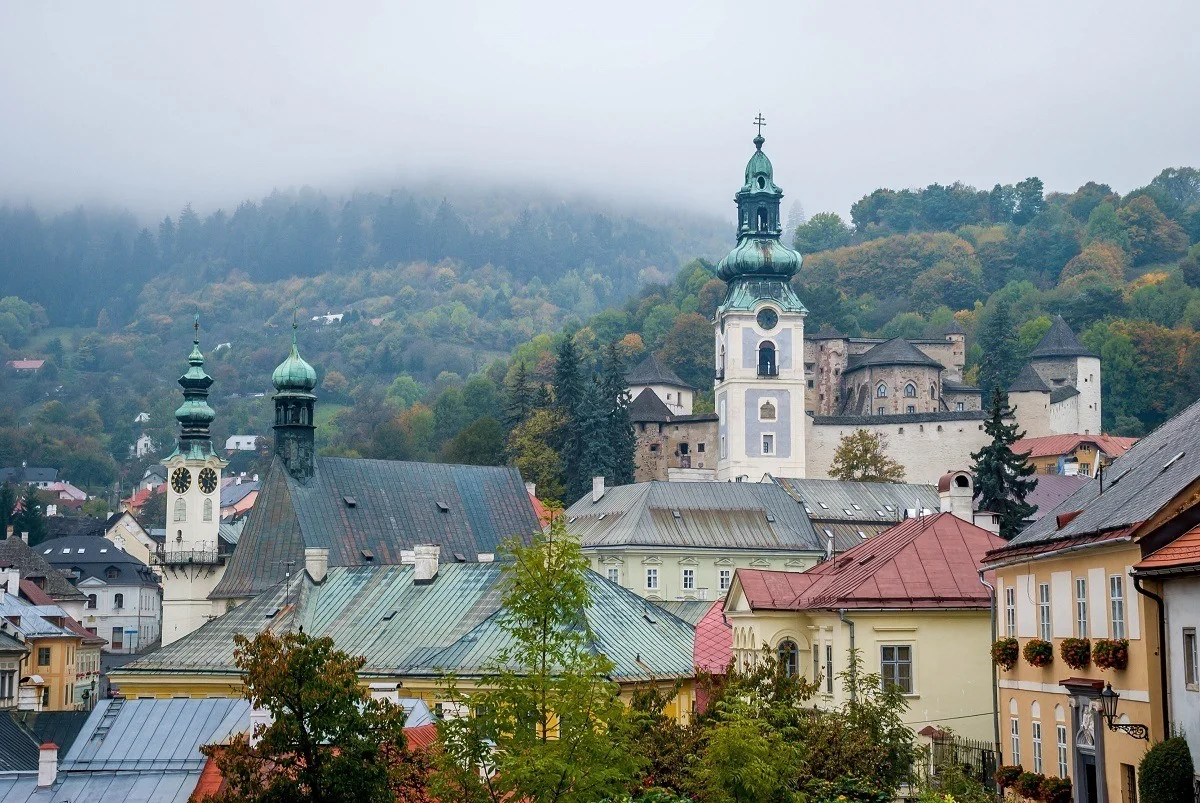
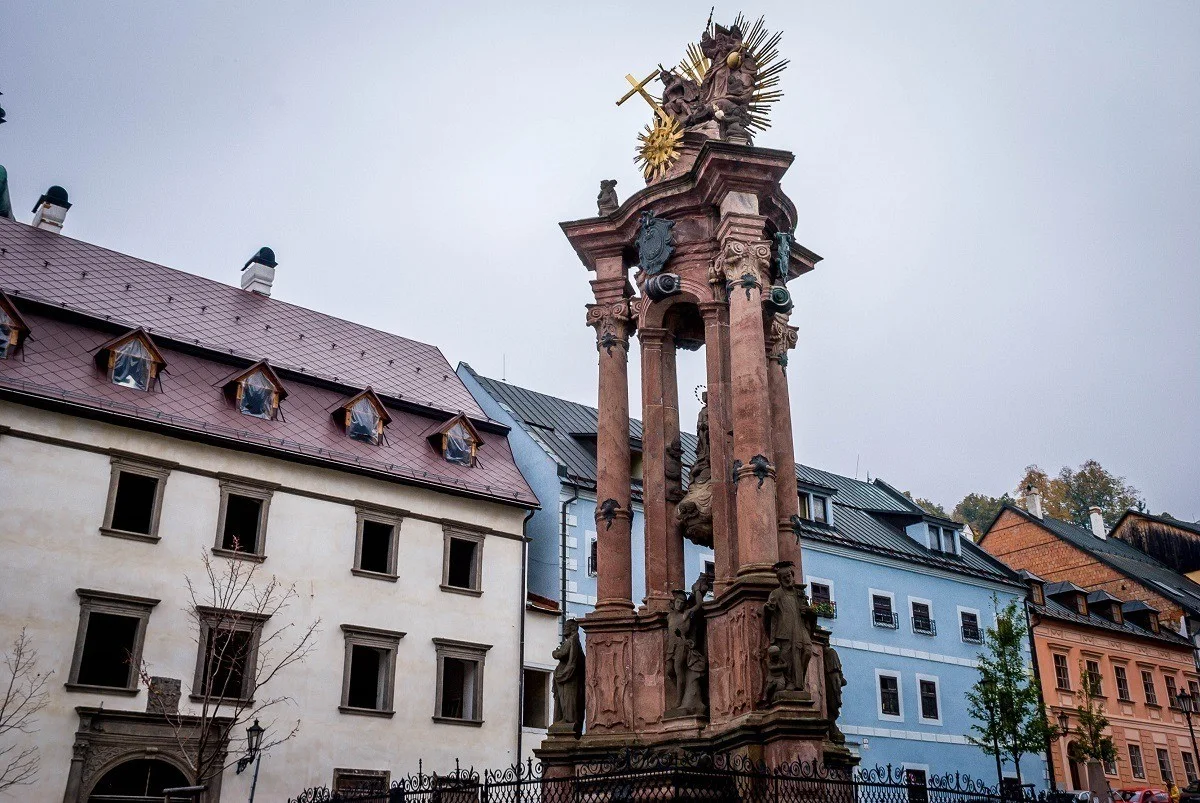
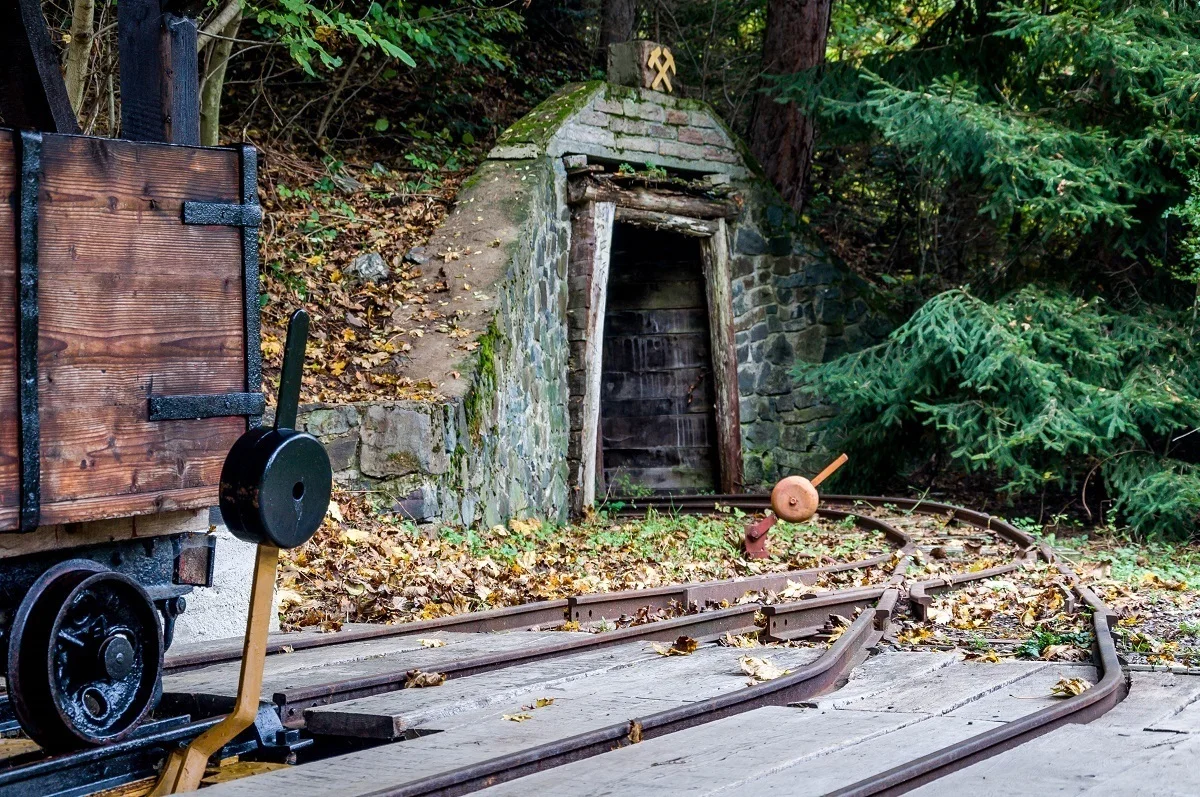
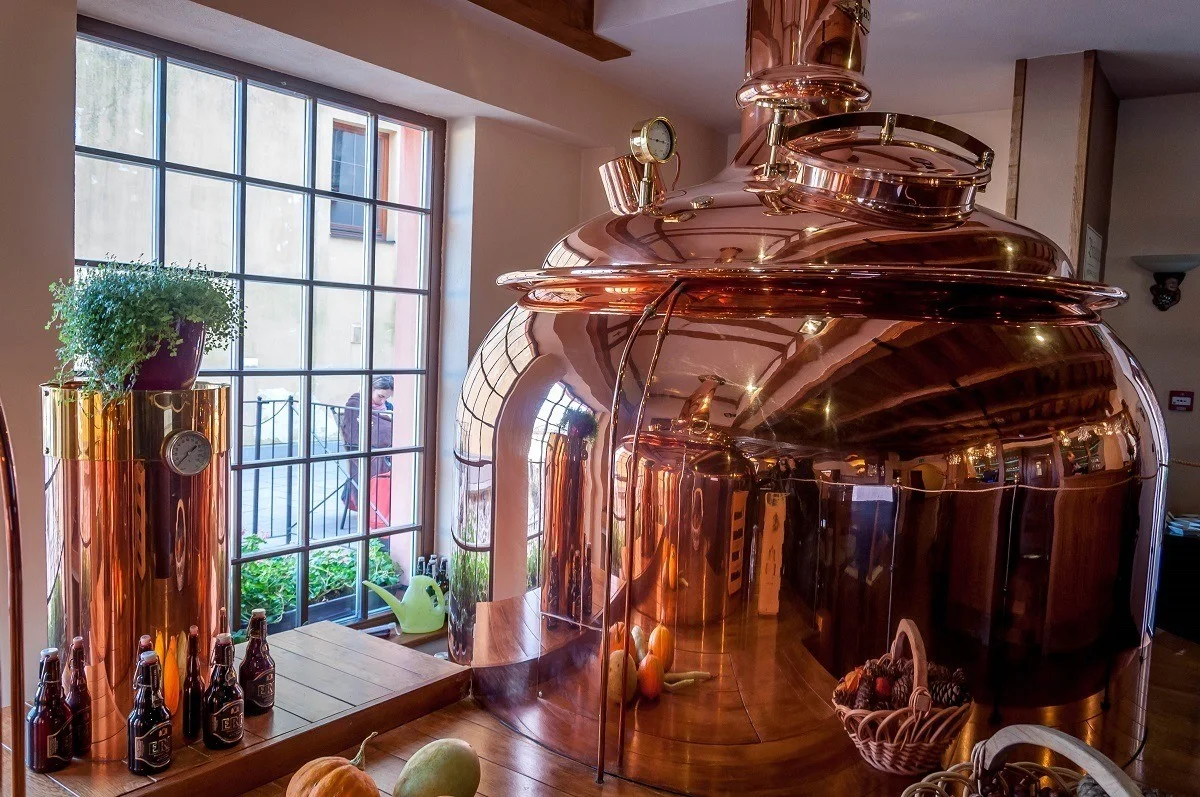
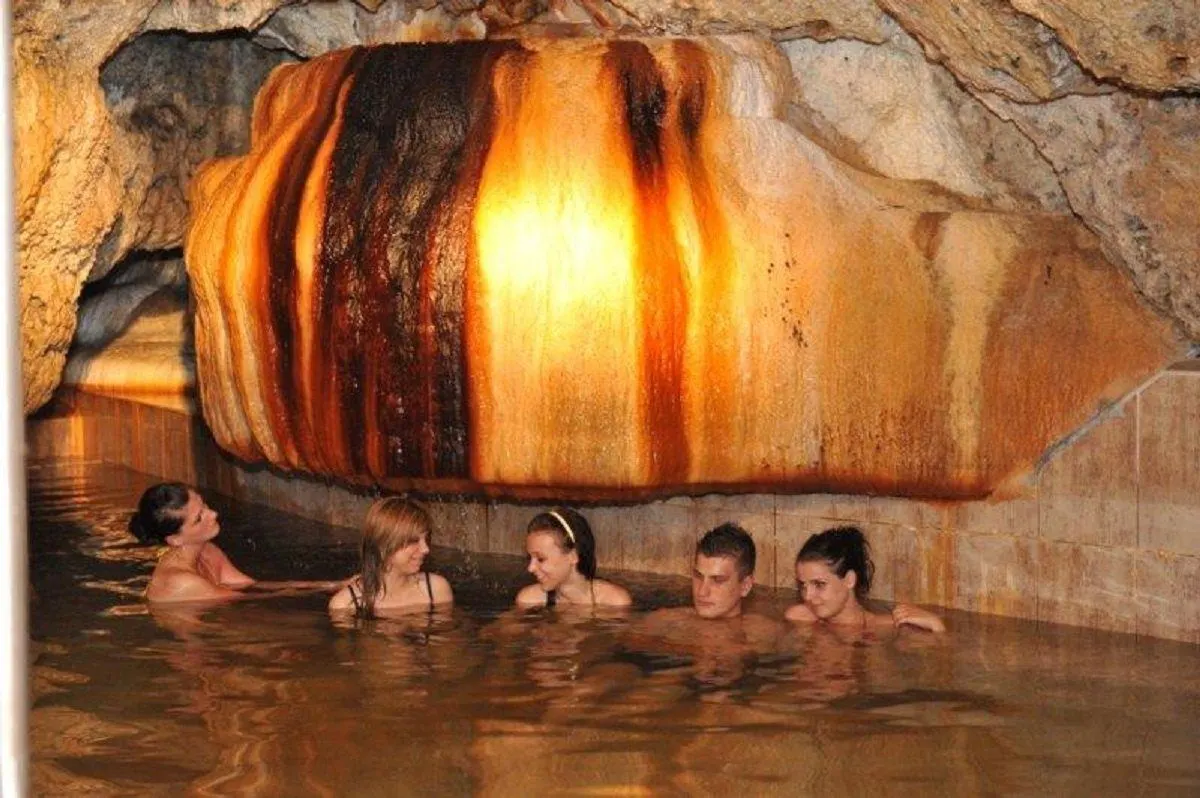
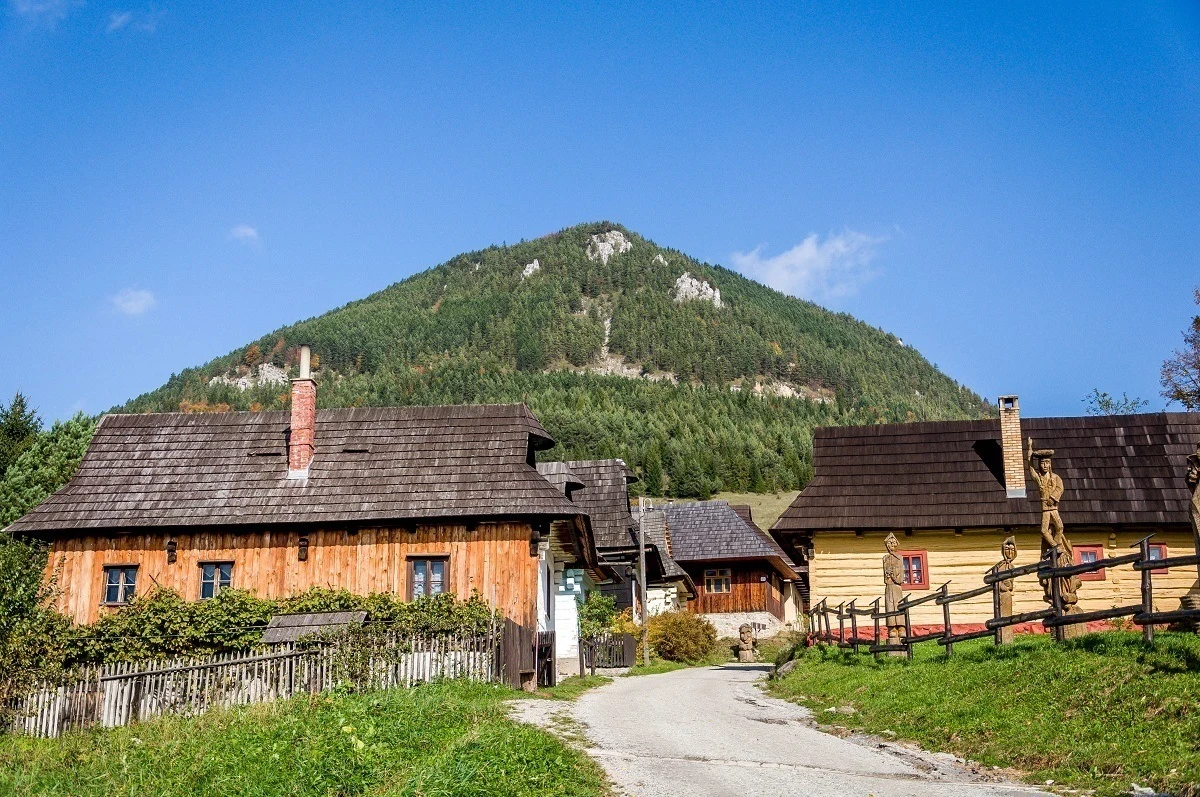
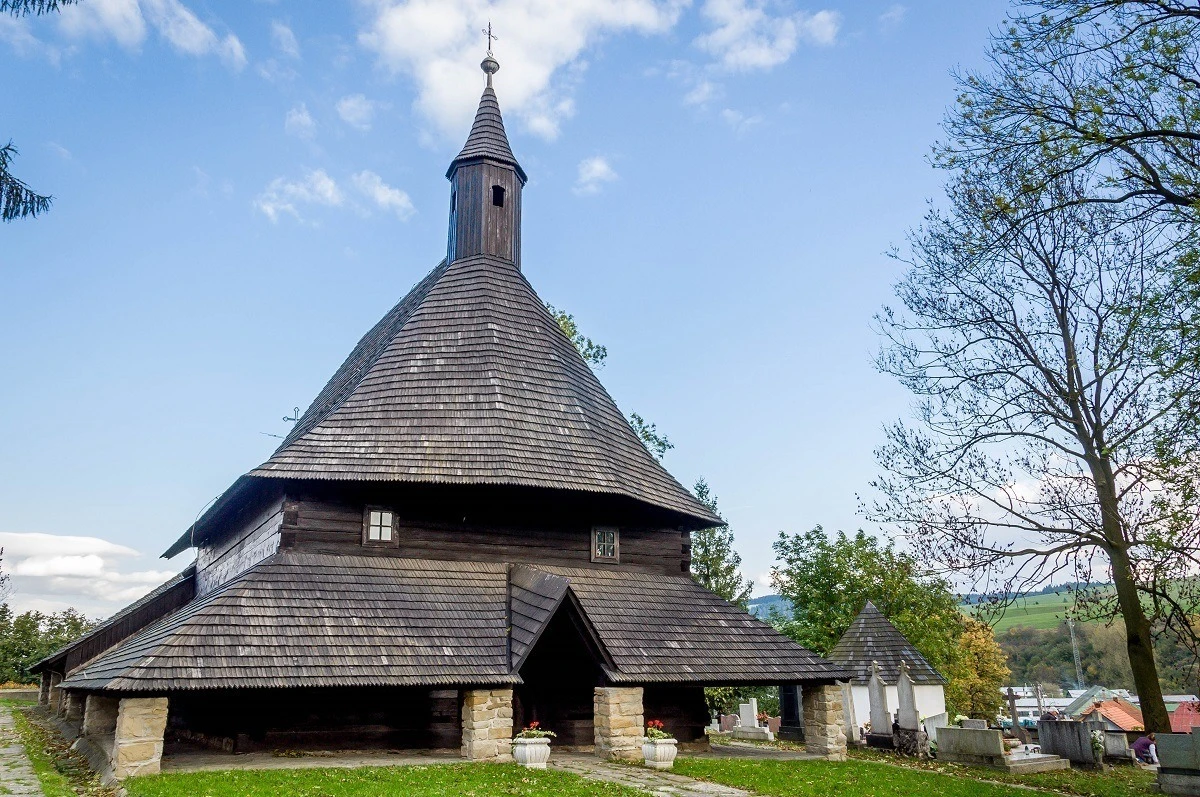
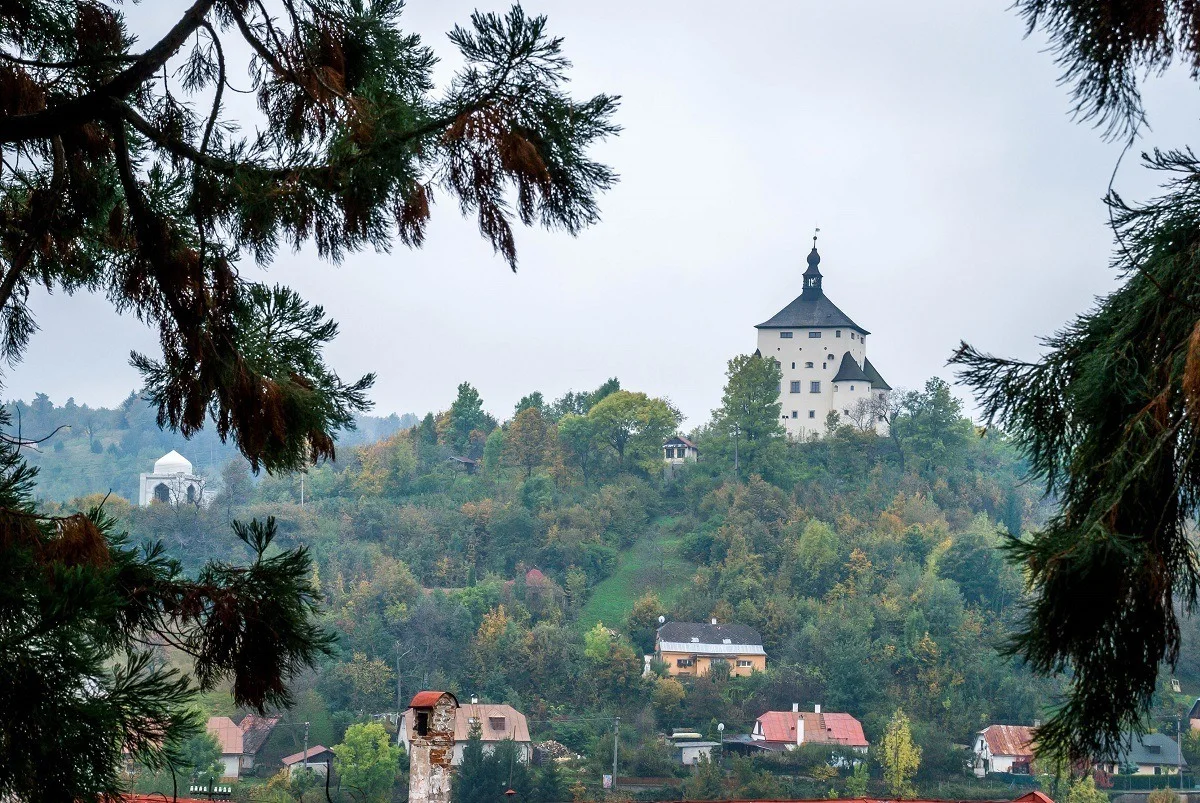
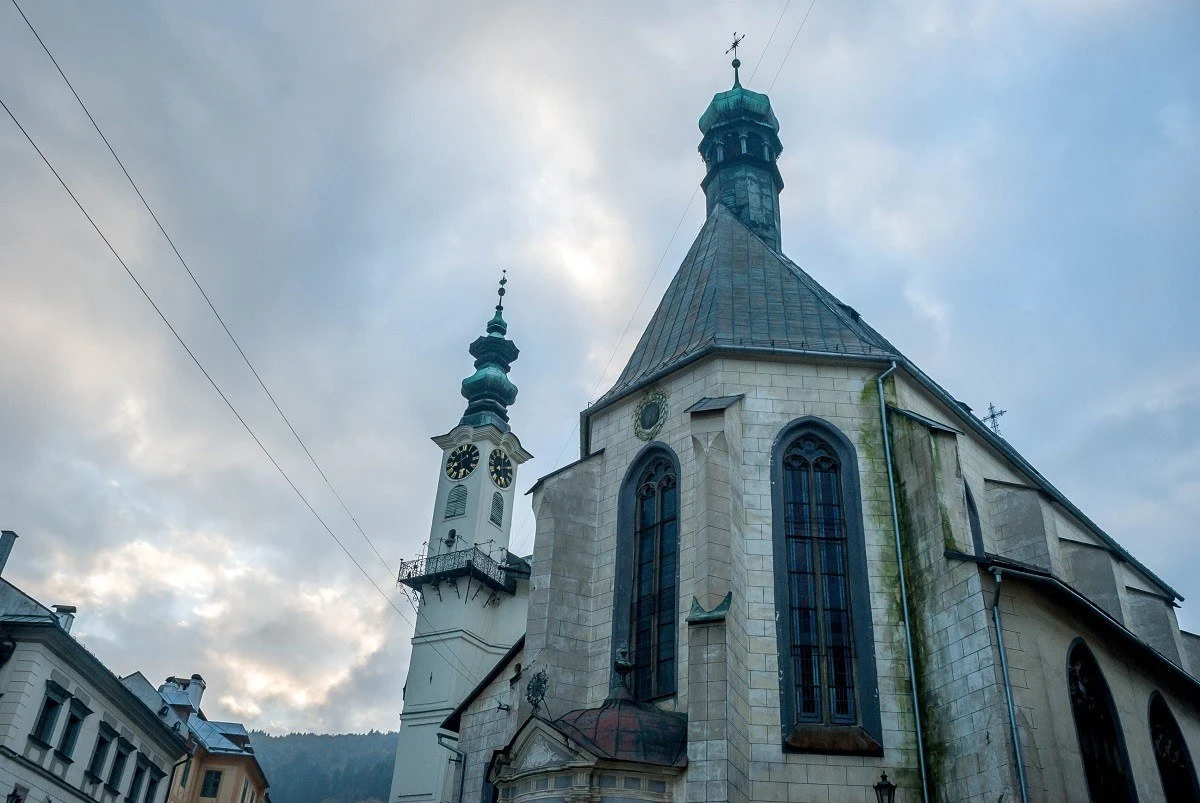
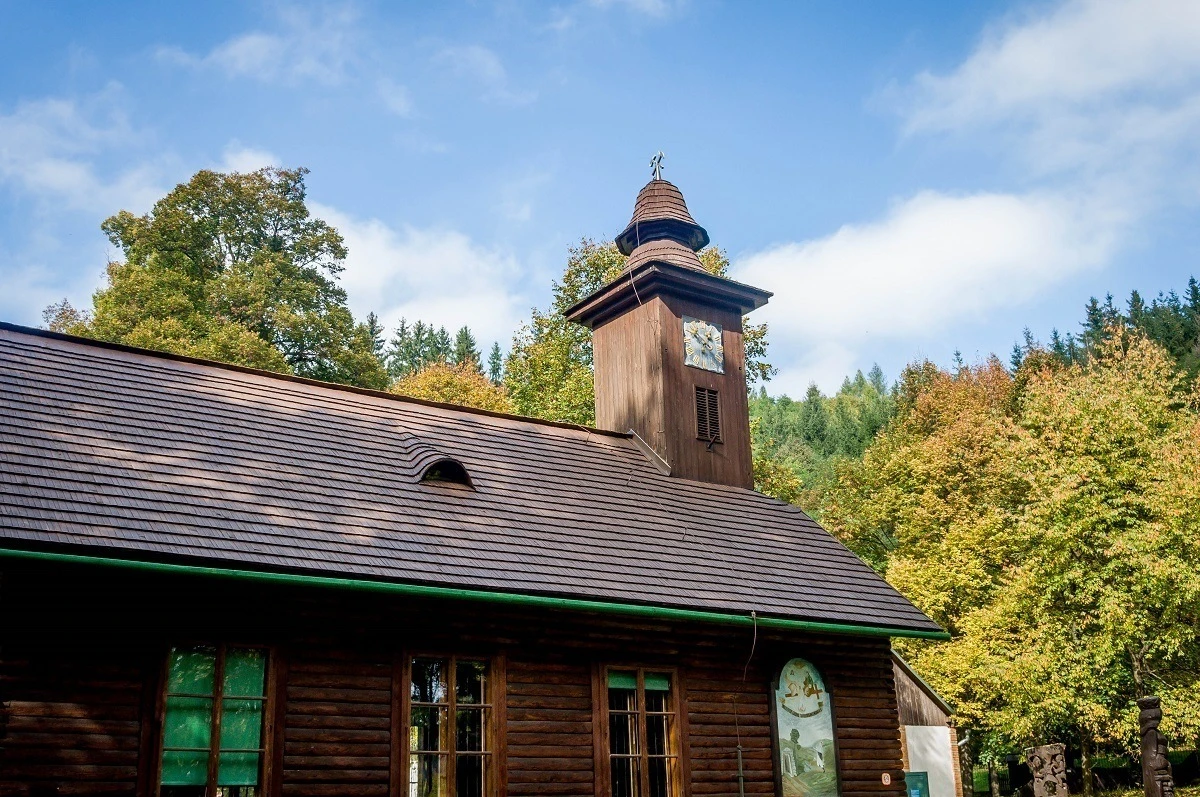
Tania
Tuesday 10th of January 2017
The Parenica cave steam bath is calling me!
Chris
Tuesday 28th of June 2016
Hey there! Thanks for your article, it will be of great help to me when I travel to Banska Stiavnica in September. I am wondering what hotel you stayed at? I am looking for a good place to stay - an old building, in the main part of town, with friendly, personal service. And ideally, a place to have breakfast!
Thanks for your help.
Lance Longwell
Tuesday 28th of June 2016
We stayed at the Cosmopolitan. There isn't a restaurant on-site (but they do serve breakfast in the breakfast room), but there is one next door or at the Cosmopolitan II down the hill. It worked well for our needs. They also were very helpful when Laura sprained her ankle in town.
Tom D
Tuesday 17th of November 2015
We will be staying in central Slovakia in Sept 2016 and am looking for a guide to Banska Stiavnica. How might I get in touch with Magdalena Valkovicova to see if she is interested?
Lance Longwell
Wednesday 18th of November 2015
Tom, thanks for asking. Guides in Slovakia all need to be registered. You can find a comprehensive listing of guides at the Slovak Guide Association (the website is available in English): http://www.ssscr.sk/en/ Hope this helps.
Monika
Thursday 5th of March 2015
Thanks for the post! I´m Slovakian but haven´t been to Banska Stiavnica yet, though it´s on my list for this year :) I´m glad that you liked it, I believe that tourism is still heavily underdeveloped in our beautiful country - it has so much to offer but we also have lots of work to do.
Lance Longwell
Friday 6th of March 2015
Thanks Monika. Slovakia is one of our favorite countries right now. We'd agree that Slovakia is still off the radar for many travelers, but it will probably change. A country that beautiful and wonderful doesn't stay undiscovered for long!
James
Friday 20th of February 2015
I know next to nothing about Slovakia ... thanks for this in-depth look at this place!
Lance Longwell
Friday 20th of February 2015
Happy to help James. Slovakia may very well be one of our favorite countries right now. We've just finished a series of 6 articles on Slovakia. You might want to read some of the others. We're hoping to get back there soon and visit the eastern part of the country.